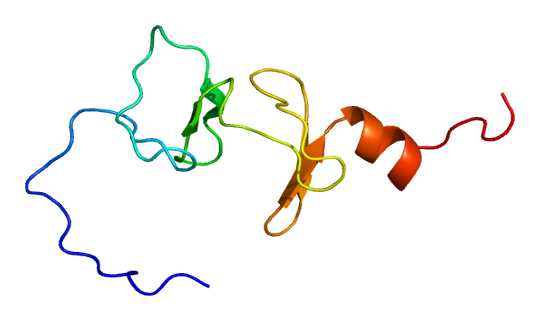Emery-Dreifuss Muscular Dystrophy

A neuromuscular disease that is characterized by muscular weakness and atrophy, with early joint contractures and cardiomyopathy.
Epidemiology
Emery-Dreifuss muscular dystrophy (EDMD) prevalence is estimated at 1 in 400,000.
Clinical description
The clinical triad is comprised of joint contractures of the Achilles, elbow and posterior neck tendons (beginning during early childhood and worsening to result in limited joint movement). It presents slowly progressive muscle weakness and atrophy (initially and generally with a humeroperoneal distribution but later becoming more diffuse). Cardiac anomalies (conduction defects, rhythm disturbances and dilated cardiomyopathy) that usually manifest at the turn of the 2nd to the 3rd decade of life and may lead to sudden death (sometimes the presenting feature of the disease) and ischemic accidents due to embolism. Disease course and severity vary between families and between patients from the same family.
Etiology
Several causative genes have been identified encoding ubiquitous proteins including emerin (EMD; Xq28 and FHL1; Xq26.3) for X-linked EDMD and lamin A/C (LMNA; 1q21.2) for EDMD with autosomal transmission. Exceptionally, variants in LUMA (TMEM43), Nesprine1 (SYNE1) and Nesprine2 (SYNE2) were reported in EDMD-like patients with autosomal transmission. Emerin, lamin A/C, Nesprine1, Nesprine2 and LUMA are nuclear envelope proteins. Around 45% of patients do not carry mutations in these genes suggesting other causative genes that remain to be identified.
Diagnostic methods
Diagnosis relies on recognition of the clinical triad (although the cardiac manifestations may be absent at onset). Muscular imagining may reveal isolated involvement of the soleus, suggestive of the initial stages of disease. For X-linked forms linked to the EMD gene, immunodetection of emerin in various tissues reveals an absence or reduction of the protein. The diagnosis can be confirmed by detection of EMD mutations. For autosomal forms and X-linked forms linked to FHL1, direct molecular analysis of LMNA, FHL1 , SYNE1, SYNE2 and TMEM43 genes is the only approach for confirming the diagnosis.
Differential diagnosis
The main differential diagnoses include other forms of myopathy with joint contractures, with or without cardiac involvement (Bethlem myopathy, SEPN1 and FKRP-related myopathies); the desmin-related myopathies; proximal myotonic myopathy; and certain forms of LGMD with cardiac involvement.
Antenatal diagnosis
Prenatal diagnosis is possible when the causative mutation is known.
Genetic counseling
Several modes of transmission have been reported: X-linked and autosomal dominant or recessive. Genetic counselling depends on the mode of transmission and on whether the mutation has been identified or not.
Management and treatment
Management should include orthopaedic measures (orthopaedic apparatus, surgery for the Achilles tendon contractures and scoliosis). Treatment of the cardiac disease: anti-arrhythmic agents including beta-blockers, diuretics, ACE inhibitors, cardiac devices (pacemaker, implantable cardiac defibrillator) when required, heart transplantation in case of end-stage heart failure, and treatment of the respiratory complications (intermittent nasal ventilation, tracheostomy).
Prognosis
Prognosis depends on the severity of muscle weakness, joint contractures, and of the cardiac and respiratory involvement. Patients with severe forms of the disease may lose the capacity to walk or require intermittent nasal ventilation.